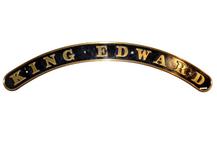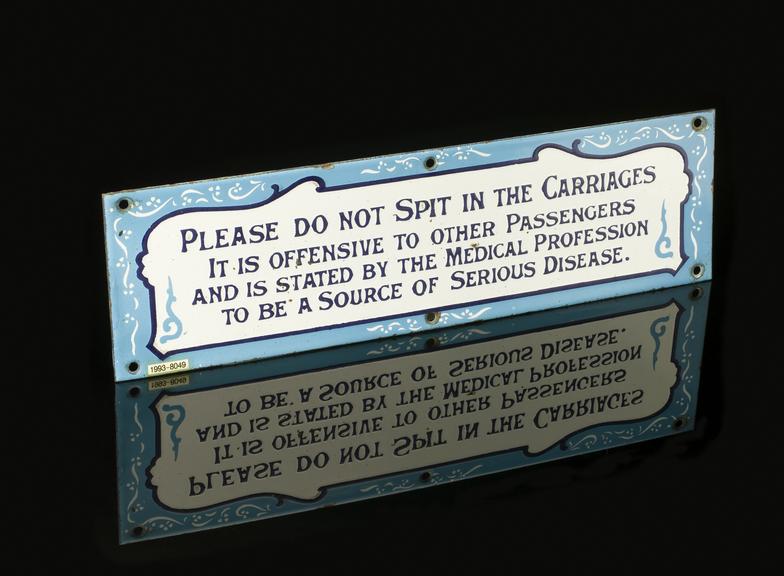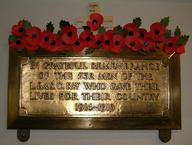

Anti-spitting sign
- Made:
- 1900-1920 in Republic of Ireland

Enamel notice, Great Southern & Western Railway of Ireland, "Please do not spit in the carriages", pale blue and white, rectangular, 4 1/2 inches x 16 inches, 115 x 408 mm.
Before the Second World War, tuberculosis (TB) was widely feared. It had been one of the biggest killers in the 1800s. Once it was recognised that spittle contained the bacteria that cause tuberculosis, spitting in public was discouraged to prevent the spread of infection. Fortunately, drug therapy almost eradicated TB in wealthier countries in the decades after the Second World War.
This sign was used on Great Southern & Western Railways in Ireland to prevent the spread of disease but also to discourage offending people. Spitting was once an acceptable habit but changing social manners, as well as its link with disease, led to it being frowned upon and viewed as offensive.
Details
- Category:
- Locomotives and Rolling Stock Components
- Object Number:
- 1993-8049
- Materials:
- enamel
- Measurements:
-
overall: 115 mm x 408 mm .65kg
- type:
- sign
- credit:
- Allen, P.




